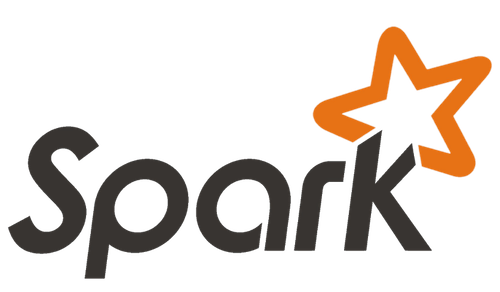Spark is the talk at every data conference these days. But what's the big deal with it anyways? While glad you asked, I happen to have wondered that myself.
After figuring out what distributing data and Hadoop are all about, the question is where does Spark come along? Everyone is always comparing Spark to Hadoop, so how are they comparable?
As always when one has a metaphysical question, let's turn to Wikipedia for help.
"Apache Spark is an open-source cluster-computing framework. Originally developed at the University of California, Berkeley's AMPLab, the Spark codebase was later donated to the Apache Software Foundation, which has maintained it since. Spark provides an interface for programming entire clusters with implicit data parallelism and fault-tolerance."
Right, helpful.
So Spark is an open source cluster computing framework. Wikipedia also tells us it was developed in 2009 at the University of California at Berkeley then donated to the Apache Software Foundation in 2013 (just like Hadoop ). Today, it's Apache's most active open source project.

Spark's logo is quite pretty as well.
Spark vs. Hadoop
So first of all let’s be rigorous. Spark isn’t up against Hadoop, it’s an alternative to MapReduce. Spark doesn’t even have its own distributed storage system so it’s generally installed on top of the Hadoop Distributed File System. It can work directly on top of YARN or other cluster managers like MESOS.
The main difference between Spark and MapReduce is that MapReduce works with persistence storage, while Spark uses Resilient Distributed Datasets. Yeah I know, uhm what?
Spark vs. MapReduce
Basically when you do a query in MapReduce, the system rewrites all the data back on the physical storage medium after each operation. This makes it slow. It also means you can’t reuse intermediate results when you’re performing multiple computations. If you have an algorithm that performs the same operation repeatedly, that has a high cost in terms of computation time.
Spark handles a lot of the operations “in memory”. So it copies the data from the physical storage medium into the RAM memory of the worker node, and processes it far faster. While it’s stored in RAM, Spark can also do several operations on the data at once.
There is a reason that MapReduce doesn’t process operations in-memory of course and is therefore much slower. Originally when the data was processed in-memory, it was vulnerable to faults. The memory storage is much less stable that the physical medium. However, Spark has managed to make in-memory processing fault tolerant with Resilient Distributed Datasets. More generally, it means that if the RAM memory fails, the data can be recovered.
More generally, Spark doesn’t read and write data as often so it can be between 10 to 100 times faster to execute jobs than MapReduce.
So now when someone talks to you about Spark vs Hadoop, you should first think:
- Um, it’s Spark vs MapReduce, not Hadoop
- Spark is faster because it processes in-memory.
There are a couple of other differencing elements.
Streaming Data with Spark Streaming
Because Spark processes in-memory, it isn’t limited to functioning in batch mode like MapReduce is. Batch processing means that when it processes data, it takes sets of records as an input, processes them, and then produces an output of sets of data. Both the input and the output are batches of records.
The opposite is streaming processing, where you can stream data and analyze it live. Your calculations can run on all your data as it comes in and have a truly iterative model. This is allowed by Spark Streaming. If you want to sound particularly cool at machine learning meetups, you can point out that Spark Streaming isn’t actually “streaming.” In reality it works on micro batches not on each record at a time. But the effect is the same.
Spark for Developers
Also MapReduce is hard to set-up and to program. Spark makes it easier to program applications in familiar programming languages like Python or Java. Its API is also much more flexible than MapReduce’s so it allows more versatility. Moreover it can be set on all kinds of different data platforms, and can access lots of different data sources including HDFS, Cassandra or Amazon S3 (cloud storage).
Another interesting aspect for developers is that Spark can come, as we’ve said, with Spark Streaming as well as a batch mode like Hadoop. This allows for real-time processing. So you can get insights from your data as it is captured and make faster business decisions.
Spark and Machine Learning
Spark is also particularly useful for machine learning, because you can reuse intermediate results of your computations. Many Machine Learning algorithms are based on several iterations over the same data to refine the results. This is much faster when you can work on intermediate results in RAM. MapReduce rewrites all intermediate results so the processing time is multiplied.
With distributed storage systems you also have a set-up time for jobs you compute. Because MapReduce rewrites every intermediate result for every new job you’ll have to set it up again. Spark however will prepare the worker nodes to distribute several operations simultaneously, so you only have to set-up once. This means it can implement complex algorithms in a more efficient manner without having to set-up at each new step.
Spark also has a machine learning library developed for it which is one of the most dynamic open source projects: MLLib. This algorithm library is only constituted of highly scalable algorithms that can be trained across distributed data. You can also use Spark and MLLib in Python with PySpark. You can query your data in SQL with SparkSQL or process it in R with Spark R. And you can use GraphX to build graphs of your distributed data with Spark speed!
 The Spark stack.
The Spark stack.




